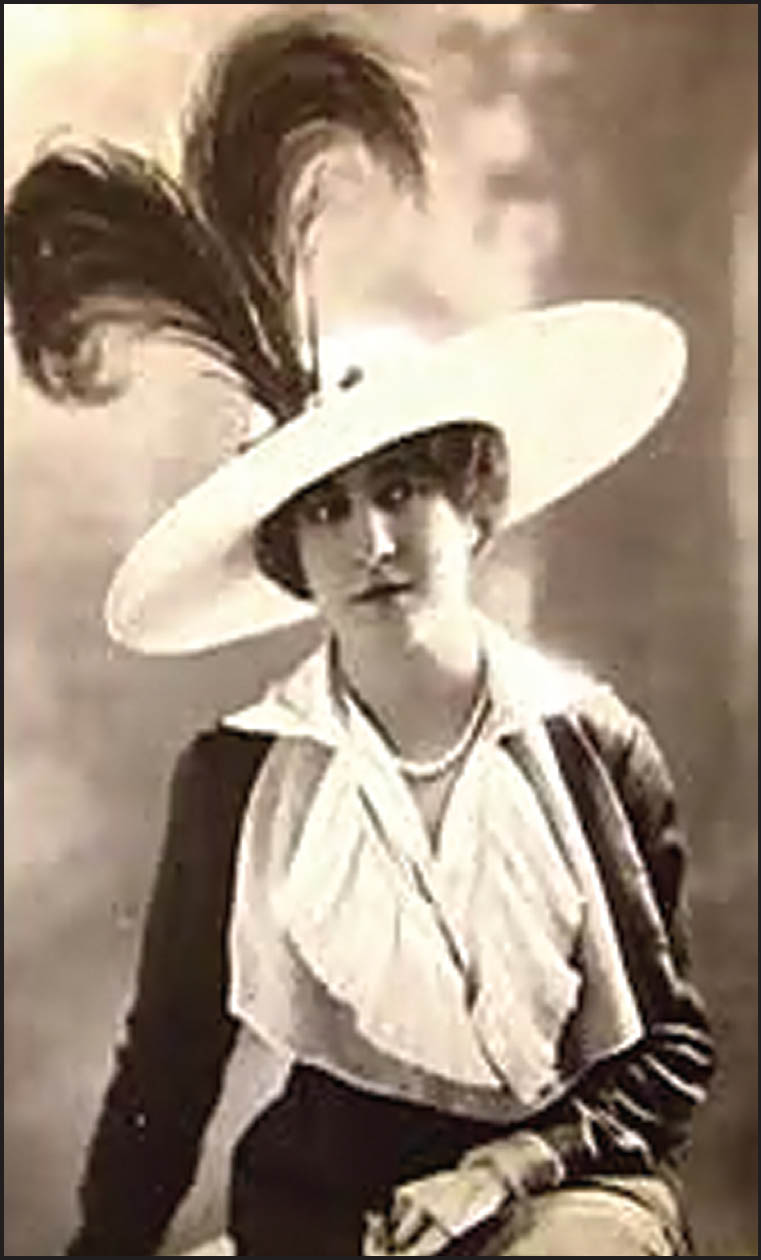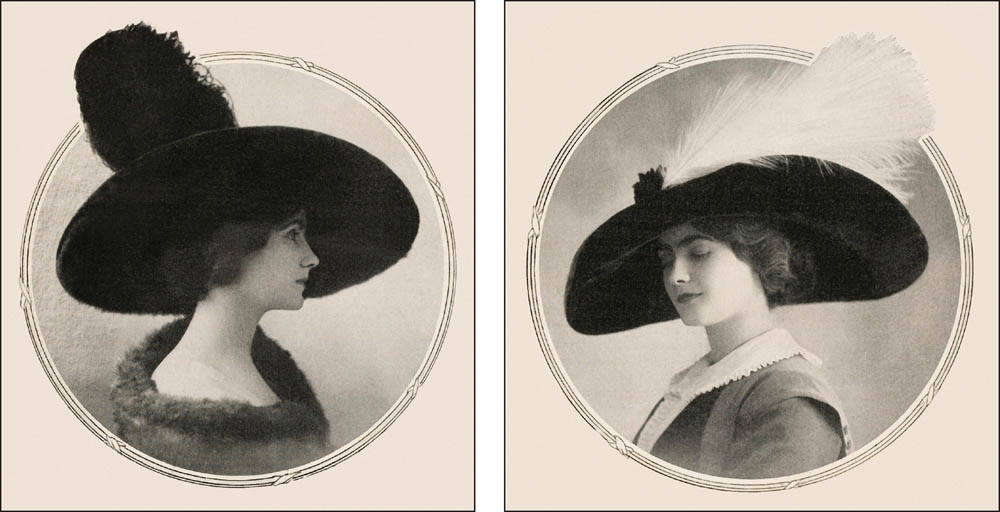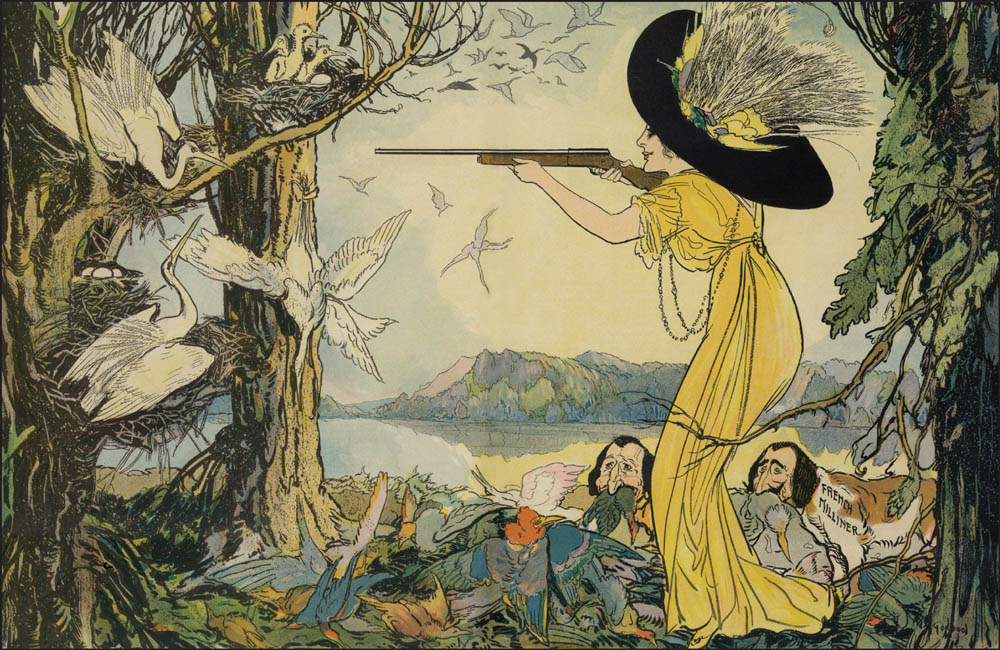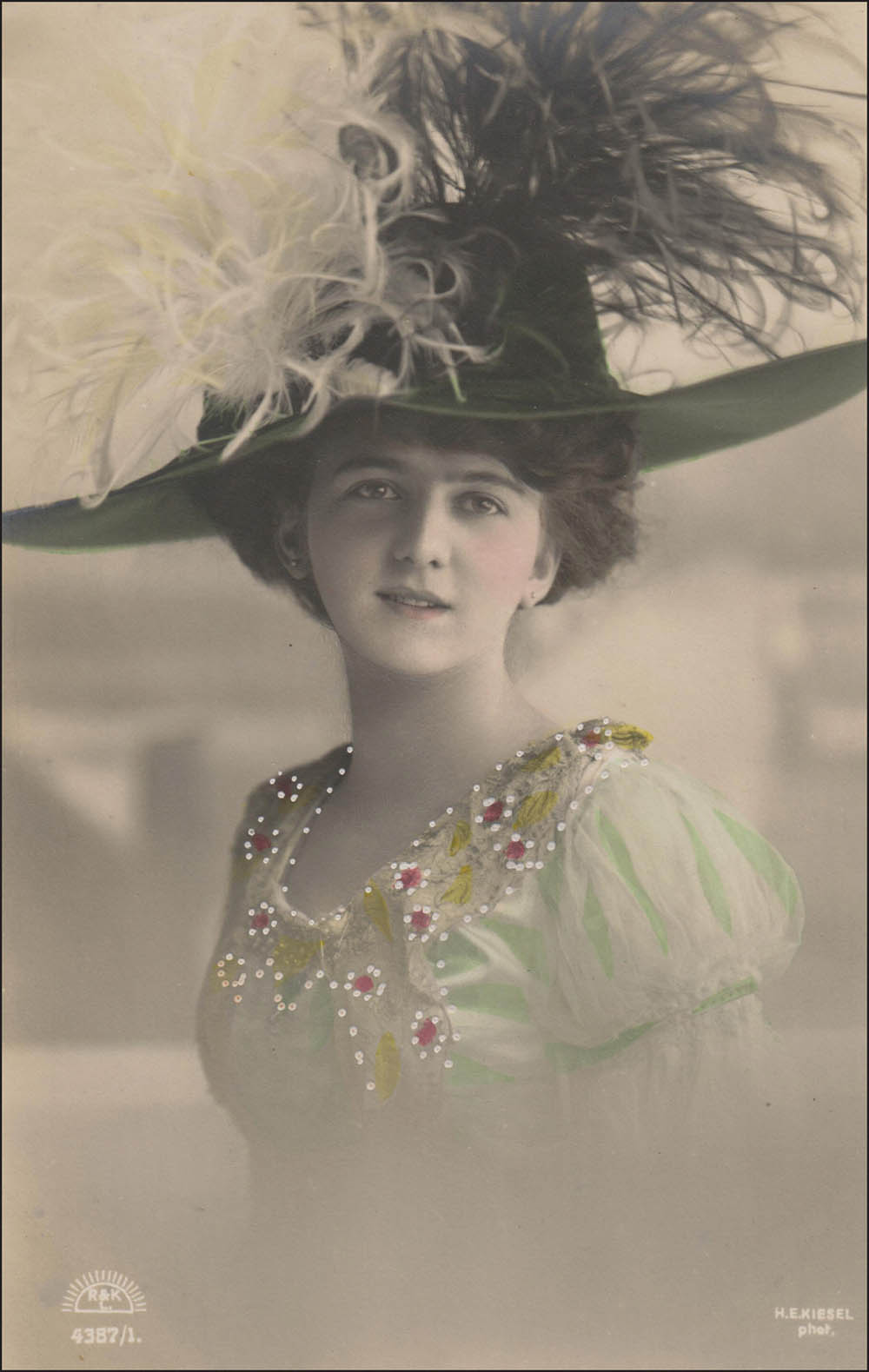

There can be few people in the western world and further afield who are not familiar with the name of Coco Chanel. Her amazing life and times have long been well documented by researchers and authors over the years, but in terms of her involvement with the creation and development of large hats in the earlier part of her career (during the Edwardian era), I felt that a brief summary of her outstanding contribution to the world of fashion well worth inclusion in this book.
The story of Gabrielle Chanel (as she was known at birth) is very much the classic ‘rags to riches’ scenario and she is the only fashion designer to gain a listing in Time Magazine’s top 100 most influential people of the twentieth century. One can find many references to Chanel’s middle name being listed as ‘Bonheur’ but company authorities inform me that this name did not actually appear on her birth certificate.
From a tough start in life, Gabrielle or Coco as she became known, was determined, ambitious and energetic in all she did. She became a prolific designer and her legacy today is reflected not only in haute couture clothing fashions (who is not familiar with ‘the little black dress’ and the Chanel suit?), but also across a wide range of upmarket jewellery, bags, perfumes, Suntan lotion and many associated products. Once established, Chanel was arguably the leading icon of fashion in the twentieth century.
The profusion of stories surrounding Chanel during her colourful life is, seemingly endless – featuring associations with the well-connected and wealthy, high profile affairs and the apocryphal story that she gained the name Coco as a result of the fabulous parties she threw in Paris where cocaine was an integral part of the menu. Quite a gal and a tough ‘cookie!’
But to revert to Chanel’s beginnings: she was born out of wedlock in August 1883 to laundrywoman Eugenie Jeanne Devolle and Albert Chanel in the Sisters of Provence charity hospital in Saumur, France. The couple were subsequently married in the following year and the young Gabrielle was raised, along with her four siblings, in a one-room lodgings in the small town of Brive la Gaillarde. There, her father Albert operated as an itinerant and low-income street vendor – peddling work clothes and undergarments. So far so bad!
When her mother died in 1895, the 12-year-old Coco and her two sisters were sent by their father to the convent of Aubazine in the Correze region of central France. The religious order there – The Congregation of the Sacred Heart was ‘founded to care for the poor and rejected, including running homes for abandoned and orphaned girls.’ After such a poor start in life, who would have guessed, what the years to come would bring to the latent designer?
After some six years at Aubazine, Coco had learned the art of sewing and gained employment as a seamstress. But when not plying her trade with the needle, she sang in cabaret, made her stage debut and subsequently performed at various venues frequented by the military – especially in the town of Moulins. Her youthful charms caught the eye of many but her singing voice was not up to par and her hoped-for stage career did not materialize.

Chanel’s friend – the French actress Gabrielle Dorziat modelling one of the former’s early hat creations as featured in Les Modes magazine in May 1912.

Early images of Coco Chanel wearing examples of her own feathered hat creations. (Comoedia Illustré 1910 Photo Félix/All Rights Reserved.)

An original 1913 caricature by artist Georges Goursat Sem – ‘Tangoville sur Mer’ featuring Chanel dancing with her polo playing lover Arthur ‘Boy’ Capel. (Image by kind permission of Chanel, Paris.)

It has been suggested that this illustration of a fashionable lady in her large, feather bedecked hat, shooting exotic birds – by the Scottish artist Gordon Ross – 1873–1946, (originally featured in PUCK magazine in May 1911), was very probably ‘aimed’ at Coco Chanel as a form of protest against the use of feathers on her early millinery. (Note the heap of dead birds at her feet and the two nearby dogs, one of whom is labelled ‘French Milliner.’)
During this period, Chanel became the mistress of the wealthy textile heir Etienne Balsan, and for the next three years lived a self-indulgent lifestyle while cultivating the wealthy social set who revelled in their fortunes and decadent gratification. You can almost see Chanel’s future starting to map itself out.
In 1908 Chanel began a second affair, which lasted nine years, with a friend of Balsan – the never faithful polo playing Captain Arthur Edward ‘Boy’ Capel During this time Chanel began designing hats – an venture which evolved into a commercial enterprise. She gained her licence as a milliner in 1910 and opened a boutique (supposedly financed by Capel) at 21 rue Cambon in Paris, under the name Chanel Modes, from where she designed and sold her outsized millinery creations. Many of these featured copious quantities of feathers which were often referred to as ‘birds nests’.
It was at this time that Chanel’s millinery career really took off when the renowned theatre actress Gabrielle Dorziat wore her Edwardian style hats in Fernand Nozière’s play Bel Ami in 1912 and later in the same year in the publication Les Modes. Coco was on her way and her large feathered hats, to a considerable degree, had opened the door to what became an astounding and diverse life that most of us can only dream about. Merci Coco pour les modes.
